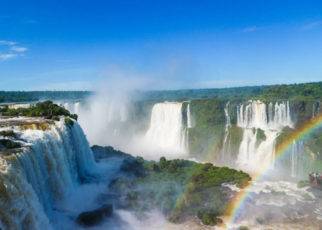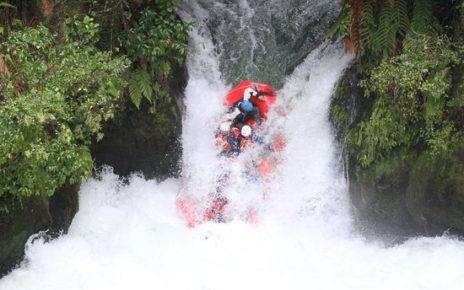The Iguazu/Iguacu Falls span the borders of Argentina and Brazil respectively, and have been a World Heritage Site since 1984. The waterfalls are widely regarded as one of the natural wonders of the world, and only Victoria Falls can beat them numerically for the sheer volume of water flowing over the falls.
At one point in the national parks, the viewer can be surrounded by 260degress of waterfalls. This article lists some useful tips to get the most of a trip to the Iguazu Falls in Argentina and Brazil.
Stay For More Than Just One Day at the Iguazu/Iguacu Falls
According to Eder Doneles, an official guide of the Iguacu Falls for Cataratas Turismo, far too many travellers make the mistake of thinking that Iguacu can be done in just a day. He says that this often means that clients who try to do the falls in one day end up with that one day being a great rush.
Far too much time is lost to border crossings between Argentina and Brazil and the transfer by road between the two sides of the falls on a one day visit. Eder explains that it is far better to spend more time here, rather than in the cities of Buenos Aires or Rio de Janiero, as there is so much to see here and most people are not aware of how much there is to see.
For example, a day on each side of the border is the minimum recommended to see the falls without undue haste. There is also the Bird Park (which was the first breeding centre for endangered birds in Brazil) just outside the Brazilian side of the falls and the enormous hydroelectric dam at Itaipu (which has recently seen its 15millionth visitor since opening its doors to tourism). The Itaipu dam is upriver from the meeting of the Iguacu and Parana rivers on the orders of Brazil and Paraguay.
Then there are the three cities of Foz do Iguacu (Brazil), Puerto Iguazu (Argentina) and Cuidad del Este (Paraguay). For those that want an aerial view, there are helicopter flights, or even a glider of the Itaipu dam. And for those that like shopping, the shopping centre in Cuidad del Este is reputed to have nearly everything possible to buy.
The adventurous may enjoy the zipline/canopy walk through the Brazilian subtropical rainforest which ends up with a 40m abseil off a rockface facing the Iguacu Falls.
Stay in the Sheraton Hotel in the Argentinian Iguazu Falls Park or Hotel Das Cataratas in the Brazilian Iguacu Falls
Both of these hotels are extremely pricey, but they have one major advantage over all the other hotels in the region – they are each the only hotel allowed in the national park in their respective countries.
This means that the visitor staying at one of these hotels can visit the falls first thing in the morning or last thing at night, when nearly all the tourists have one for the day. Not only are conditions more likely to be better for photography at this time, but the quietness is greatly appreciated after venturing through the heaving throngs of midday.
Items the Visitor Should Take on a Trip to the Iguazu Falls National Park
Visitors should take plenty of water (it is very expensive to purchase inside the parks, although tap water is available in a few places), sunblock and a sunhat/umbrella, as conditions can be very hot and humid.
A waterproof bag or jacket may be useful to protect electronic items if taking the speedboat tour (although small waterproof sacks are provided) or if venturing out into the middle of the falls on the lower level catwalk on the Brazilian side. However, many visitors will find the water spray pleasantly cooling and welcome, especially in summer!
The Iguacu/Iguazu Falls are an exceptional World Heritage Site, and visitors should plan on spending more than one day when visiting the Iguazu/Iguacu Falls to get the most out of their experience.





